How Queen Sirikit brought Thai style to the world
A photo of Queen Sirikit shows her wearing an embroidered kimona top with a malong skirt at a Fiesta Filipina-themed reception held in Malacañang Palace hosted by President Diosdado Macapagal and First Lady Eva Macapagal when she and King Bhumibol came for a state visit to the Philippines in July 1963.
She was very chic in Filipiniana, as she was in the Pierre Balmain couture gown that she wore during the return dinner they hosted at the Philamlife Building.
In 1968, she wore the Thai national dress just as elegantly in brocade to receive President Ferdinand Marcos and First Lady Imelda Marcos on their state visit to Thailand. By this time, she had already secured her place in the 1965 Hall of Fame of the International Best Dressed List, which named her several times in the previous years.

We discovered some of these stunning pieces from the queen’s wardrobe, which are exhibited at the Queen Sirikit Museum of Textiles, a jewel of a museum in an 1870 Italianate building that can be a refuge from the crowds at the entrance to the Grand Palace in Bangkok.

Aside from Balmain, there are Thai designers featured as well as the likes of Valentino and Jean-Louis Scherrer. Among the Western designers, however, Balmain was the favorite; he had a 22-year working relationship with the monarch beginning with her wardrobe for the 1960 world tour until his death in 1982.

The importance of the tour could not be stressed enough in the establishment of a stronger position for Thailand in the world stage during the political and ideological conflicts of the mid-20th century. Lasting seven months and four days, the trip was also a way of presenting the world’s youngest monarch in the postwar era, with the aim of forming alliances. In this regard, the “soft power” of the royal spouse was crucial, thus necessitating a careful crafting of her image.

The queen was confident with her communication skills. As the daughter of a former Thai ambassador, she was educated in England and spoke fluent English and French. Both she and the king had lived in Switzerland and France, but neither of them had been formally introduced as Thailand’s monarchy. She would be representing the country and wanted her wardrobe to reflect her cultural identity, but also that she was a modern queen at home with Western norms. With the tour lasting from summer to winter, she would need a fashionable, seasonally appropriate wardrobe.
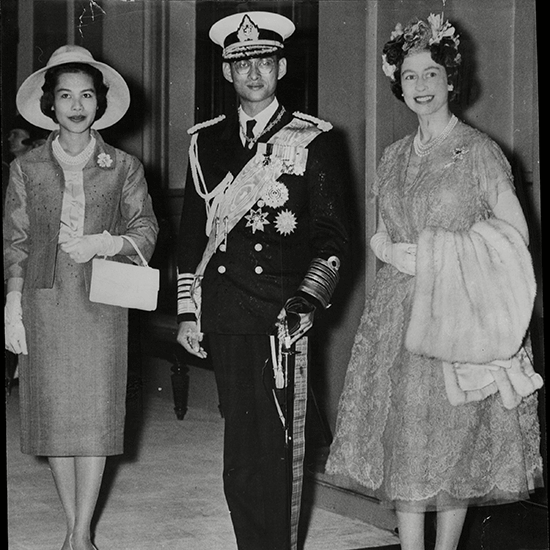
With the advice of the queen’s longtime designer, Urai Lueumrung, the choice of Balmain was a logical one. In 1959, he was a hot designer with a large couture house and his style was subtle and elegant. He understood the intricacy of contemporary European royal dress codes, and so could function as the queen’s adviser as well as her designer. He was also familiar with Thailand, having visited in the late ’50s when he met Jim Thompson and the royal lady-in-waiting, Princess Vibhavadi Rangsit.
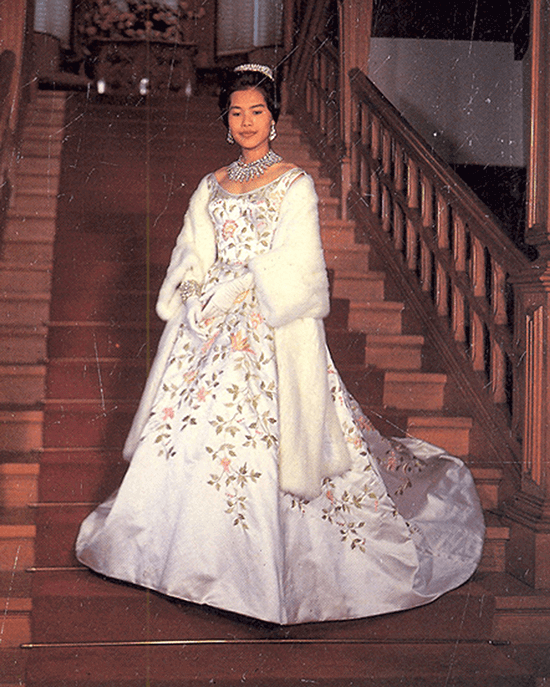
Upon receiving the commission, he had to spend time at the royal court planning with the queen and her staff and sending several bolts of Thai silk to Paris. The King reportedly granted him access to the royal jewelry vaults, allowing him to tailor some of his creations specifically to be worn with existing jewelry pieces from the royal family’s collection. He knew the particular considerations shaping the queen’s choices and framed his proposed designs accordingly: “Her dresses must carry the stamp of enduring elegance, and guard against the risk of becoming antiquated.”
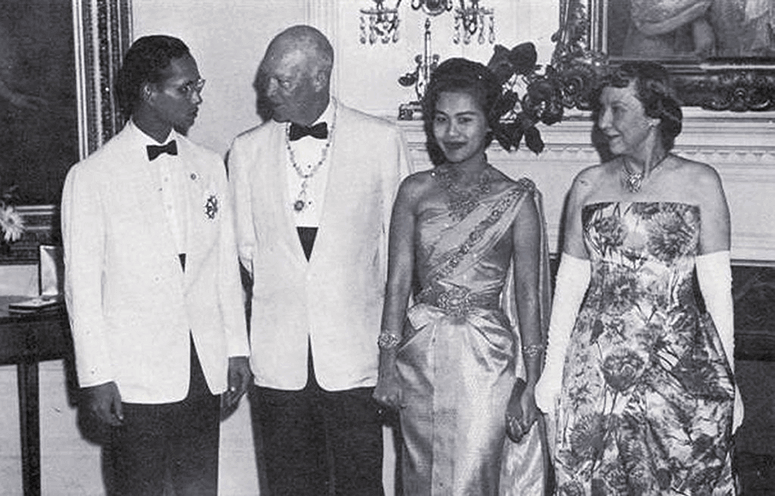
With the help of a mannequin with the queen’s measurements, as well as a fit model with measurements identical to the queen, Balmain was able to produce 150 pieces, ranging from day suits, cocktail dresses and evening gowns to furs, wraps, coats, hats, and even coordinating raincoats and umbrellas. The designer commissioned Francois Lesage to do the embroidery; shoemaker Rene Mancini for the custom footwear; the furrier Claude Wittelson for fur coats, stoles and trims in mink and chinchilla; and Louis Vuitton for the full suite of luggage, custom-made with the sign of King Rama IX embedded.
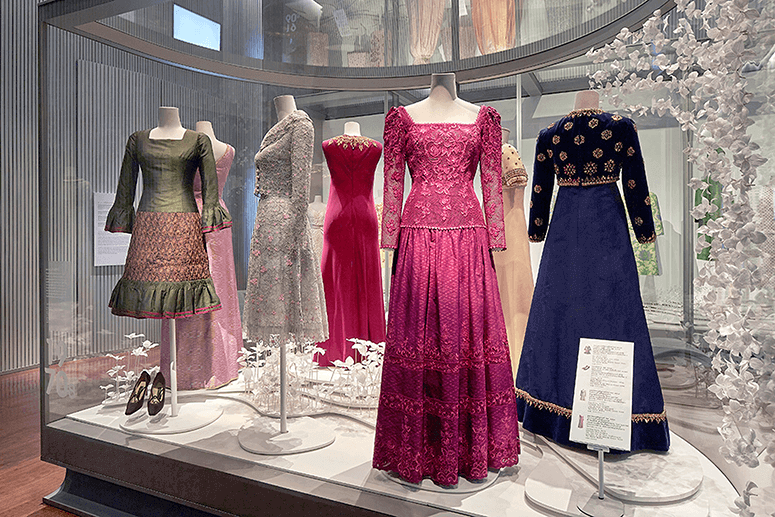
The couturier’s signature designs were evident: jackets and dresses with small ties across front or back, obi-like sashes wrapped around the waist, draped effects at hips and waist, the lavish use of bows, and large silk flowers on lapels or bodices — all done while marrying traditional Thai styles with Western influences.
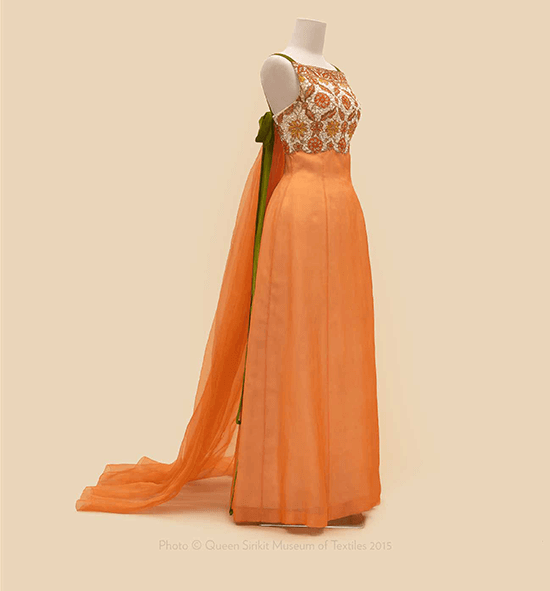
The jewelry reportedly included 12 matching diamond bracelets, six for each arm, although the Queen never stacked more than five together on one wrist. Diamonds, rubies, emeralds, sapphires, topazes, garnets and opals were among the gems in her fabulous jewel collection. Several tiaras were also packed, including a modern diamond and ruby floral tiara, a classic diamond fringe and traditional Thai diadem.
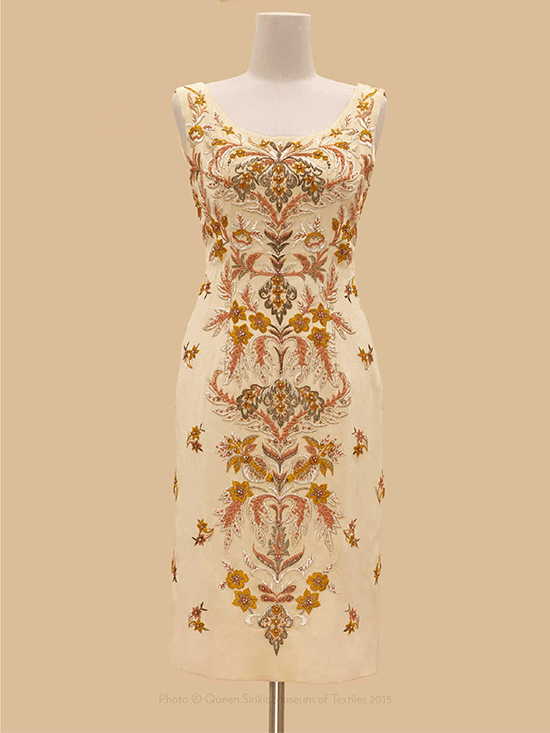
The trip was a success, with newspapers and magazines like Time reporting on “the enchantingly elegant and the most feminine Queen Sirikit.” She also made it for the first time to the International Best Dressed List that year and the following years when Balmain designed pieces for her state travels.
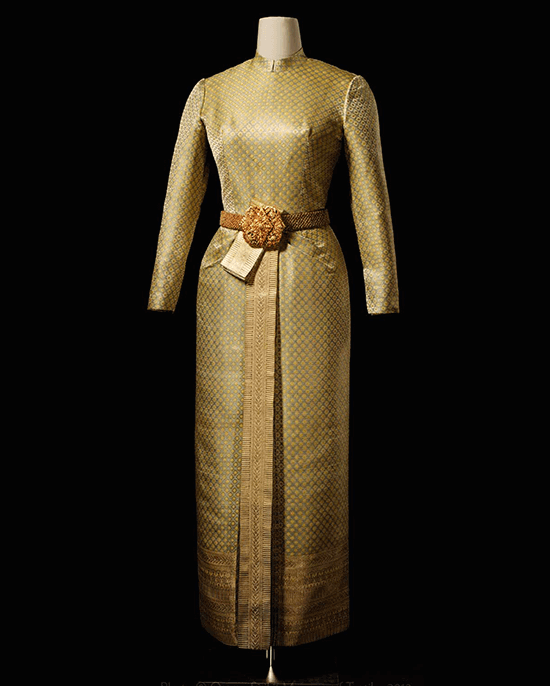
Together with Thai designers, they devised the Thai national dress utilizing weaves from the different regions of the country. Up until the 20th century, most Thais were wearing traditional clothing, but later Western attire was encouraged to project a modern state, causing a decline in the demand for Thai fabrics. Queen Sirikit wanted to change all that by promoting their textiles abroad through the couture pieces she wore during her travels. She also established the SUPPORT foundation in the ’70s with the goal of preserving and promoting Thai crafts as a source of livelihood.
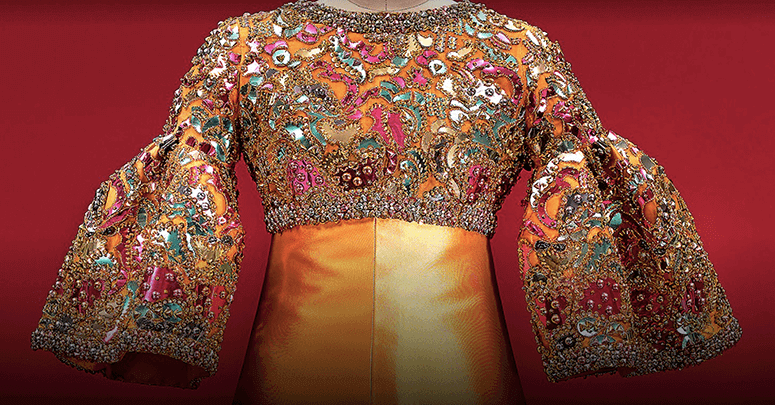
Aside from weaving, she promoted other crafts like the ancient craft of beetle-wing embellishment for carved dolls, garlands and embroidery. For an exhibit of SUPPORT products at the Grand Kremlin Palace commemorating the 110th anniversary of Thai-Russia relations, she wore an ensemble in silk ikat with beetle wings.
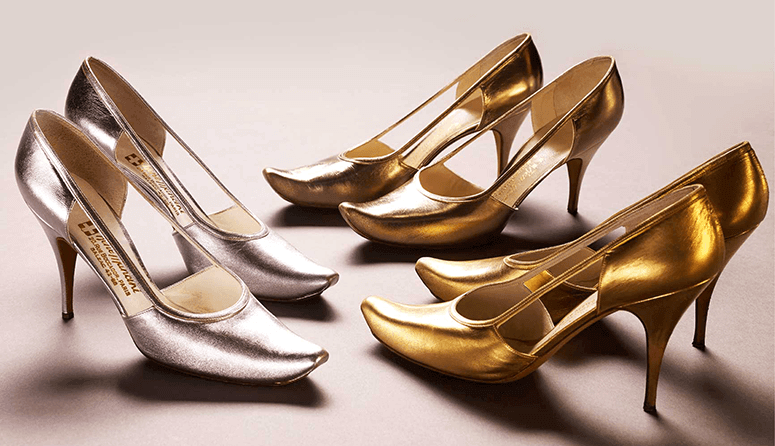
Her advocacy was further institutionalized with the establishment of the Museum of Textiles bearing her name in 2003. It not only preserves the history of Thai and Asian textiles but also acts as a conservatory and laboratory for their safekeeping and further development.
With the Queen’s iconic wardrobe collection as centerpiece, the museum is an important resource for designers who can be inspired by the many possibilities of the fabrics featured, as well as the genius of couturiers in crafting pieces that are some of the most beautiful among those made for international royals.



